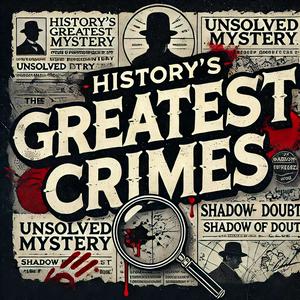🔎 Uncover the crimes that shaped history. From daring heists and political scandals to conspiracies and cover-ups, History’s Greatest Crimes takes you deep into the world’s most infamous criminal events. Hosted by two historians, Dr. Michael and Dr. Alana, each episode dissects a historical crime, revealing its impact on society, the people involved, and the larger forces at play.
🎙️ Whether it’s the FBI break-in during the Ali-Frazier fight, the St. Valentine’s Day Massacre, or the Pentagon Papers, we go beyond the headlines to explore the context, the evidence, and the lasting consequences. With expert analysis, gripping storytelling, and a touch of suspense, we uncover the true stories behind history’s greatest crimes.
🔔 New episodes drop bi-weekly! Subscribe now and join us as we unravel the past—one crime at a time.
🎧 Available on Apple Podcasts, Spotify, Google Podcasts, and wherever you listen.
🔗 Follow us for updates and exclusive content:
📌 Instagram: @historys_greatest_crimes
📌 Website: https://historys-greatest-crimes.captivate.fm (https://historys-greatest-crimes.captivate.fm)
📢 Got a case suggestion? Email us at [
[email protected].
History is full of crimes—let’s uncover them together. 🔥


